Since its inception in 1925, the District Training School for the Mentally Retarded has focused on removing people with physical or developmental problems from public view rather than rehabilitating them. Congress picked the school’s remote location in Laurel, Maryland, to replace the abhorrently titled Washington Home for Coloured Idiots, which residents of the adjacent Logan Circle neighbourhood had lobbied politicians to shut down.
The new training school’s campus spanned around 300 acres and had 22 structures, including a canteen, entertainment center, gym, theatre, baseball field, hospital, chapel, administrative offices, school buildings, dormitories, and a farm. Programmes such as those held at the farm colony were described as cutting-edge, with the goal of teaching inhabitants essential skills that would eventually help them obtain employment in the region, such as crop tending and cow milking.
It’s tough to pinpoint exactly where the District Training School went from a reasonably benign treatment and training facility to what one investigating attorney called as “the deadliest known example of institutional abuse in recent American history.” At first, everything seemed normal.
Then, in 1954, a man was jailed in Pennsylvania on white slavery charges for taking a schoolmate to York ‘for purposes of prostitution’, but there is little evidence that this was anything more than an isolated event. Around that time, a Frederick, Maryland newspaper published an article about a youngster who was committed to the school after living with a pack of stray dogs for more than two weeks because he was scared of being whipped at home.
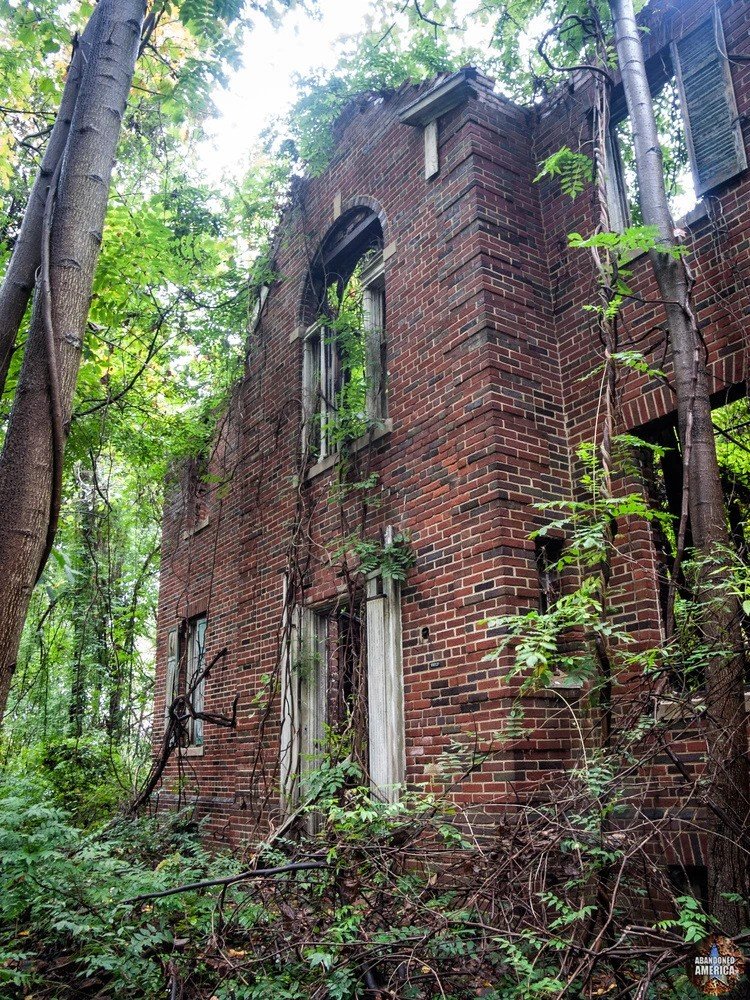
One of Forest Haven’s abandoned cottages is overrun with trees. There was little left of the inside to determine its purpose.
One of the most well-known legends about Forest Haven occurred in 1961, when a magician delivered a “beer-drinking, trumpet-playing white rabbit” named Zsa Zsa to the White House as a gift for three-year-old Caroline Kennedy. Zsa Zsa was promptly transferred to The District Training School’s hospital, The District of Columbia Children’s Centre, but without first ensuring that it could play the first five bars of “The Star Spangled Banner” on the toy trumpet supplied.
Another event in 1961 that occurred almost simultaneously garnered far less media attention: a 17-year-old African American resident was scalded to death while imprisoned in a barred detention room following a quarrel. While he was left alone in the chamber, a pipe carrying “300-degree steam and boiling water under 55 pounds of pressure” burst. He was pronounced dead at the Children’s Centre. There was little further information provided about the occurrence. Patient escape tales were increasingly regular, including a 1973 event in which three men abducted four staff at gunpoint while attempting to break a patient out of the hospital.
In 1963, the House of Representatives formally renamed the school Forest Haven and altered the phrases “feeble-minded” to “mentally retarded” and “inmate” to “patient”. The same decree allowed the District of Columbia Department of Public Welfare to waive the earlier court order and hearing required for admission and instead conduct intake at its discretion. By 1969, Forest Haven had a population of 1,250, with each resident paying $9.75 per day for care. At some time in the 1960s, funding was reduced, and recreational and athletic programmes were eliminated.
As time passed, Forest Haven became known as less of a treatment and care programme and more of a dumping ground for anyone who the District of Columbia couldn’t be bothered dealing with. People who were hearing challenged, dyslexic, or epileptic were placed in cottages alongside the developmentally retarded, and their cognitive abilities frequently deteriorated. One especially heinous incident occurred in 1974, when a local orphanage was dissolved and 20 children were labelled “retarded” so they could be relocated forever. In the late 1970s, the account of a lady who was diagnosed as moderately retarded in 1933 after her husband abandoned her surfaced. She was imprisoned at Forest Haven for over 45 years. Her children were informed that Mom had abandoned them.
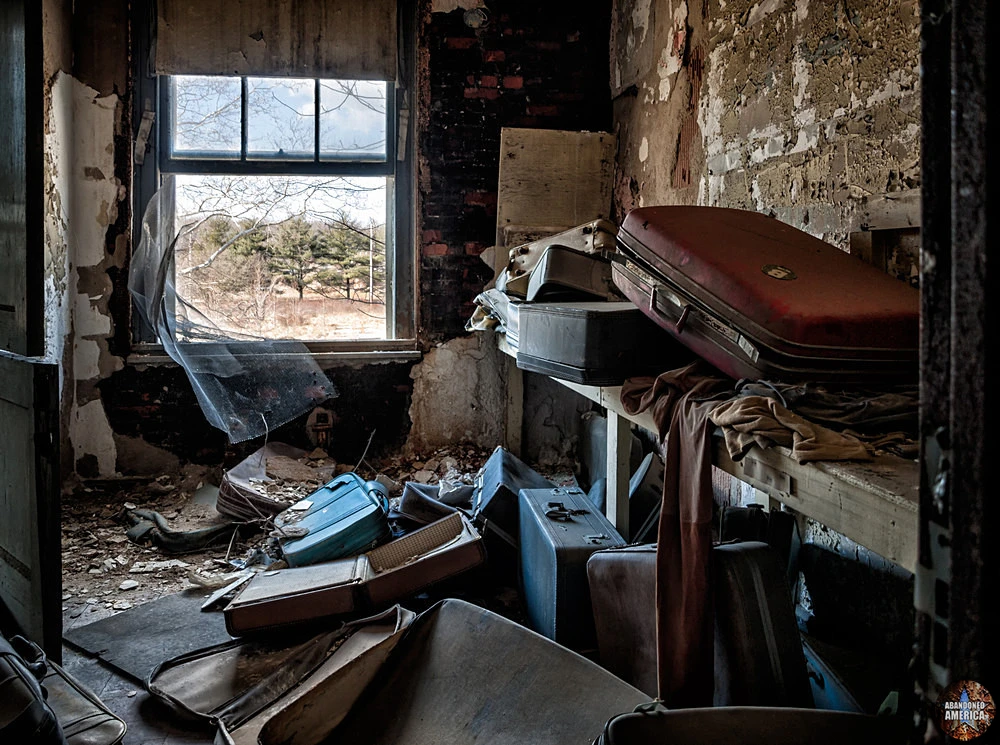
Residents’ suitcases left behind in an abandoned dormitory at Forest Haven
The 1970s deinstitutionalization movement marked the beginning of the end for many of the country’s asylums and institutions. Public opinion had begun to shift, with the dominant assumption being that community-based treatment was more humanitarian and had better outcomes. Terrible rumours, such as the suicides of four teenagers in seclusion at Forest Haven, spread across the neighbourhood. The bombshell was a major class-action lawsuit, Evans et al. vs. Washington, which claimed that harsh treatment at Forest Haven violated the residents’ fundamental rights. Betty Evans filed the lawsuit in reaction to the death of her 18-year-old daughter, Joy, revealing a narrative of cruelty and neglect that is difficult to comprehend.
Joy Evans was committed to Forest Haven at the age of eight. Her parents were unable to offer 24-hour care due to their work schedules, schools would not accept her, and private schools were too expensive. Betty saw injuries on Joy throughout her time at Forest Haven, which “ranged from chipped teeth to scratches, lacerations, and bruises all over her body.” Joy’s back was sore from urine burns while she was confined on a rubber sheet. Betty stated in an affidavit that “Dogwood, the cottage where Joy lived, was a veritable snake pit…” I once saw a nurse open the cottage door, only to discover 80 half-clad screaming ladies rush in; the nurse swiftly shut it.” According to the complaint, “Staff members locked dozens of residents, naked except for adult-sized diapers, in rooms stripped of furniture other than wooden benches.”
Joy died as a result of poor feeding, which has also killed scores of others. Residents were frequently fed baby food while lying down, resulting in vomiting, gastrointestinal bleeding, and aspirational pneumonia, which occurs when food, liquid, or vomit enters the lungs, causing a deadly infection or suffocation. The father of a 22-year-old who died of aspiration pneumonia at Forest Haven said, “They wouldn’t even give him time to swallow what he had in his mouth. They’d pour it into him like water down his throat, and it’d all come back out through his mouth and nose.
” Such treatment was more often the product of ignorance and hurry than of deliberate cruelty; there was always the possibility of termination if eight to ten persons were not fed by a staff member in the time it would take to properly feed one. In Murray Waas’ devastating exposé for the Washington Post, an occupational therapist was reported as saying, “Nobody ever told them it was inappropriate to feed the patients laying down. The unfortunate reality is that many of the employees were the only individuals in the world who cared about many of the clients.” A nurse gently cared for a resident as Waas observed, and she finished by feeding him while he lay down.
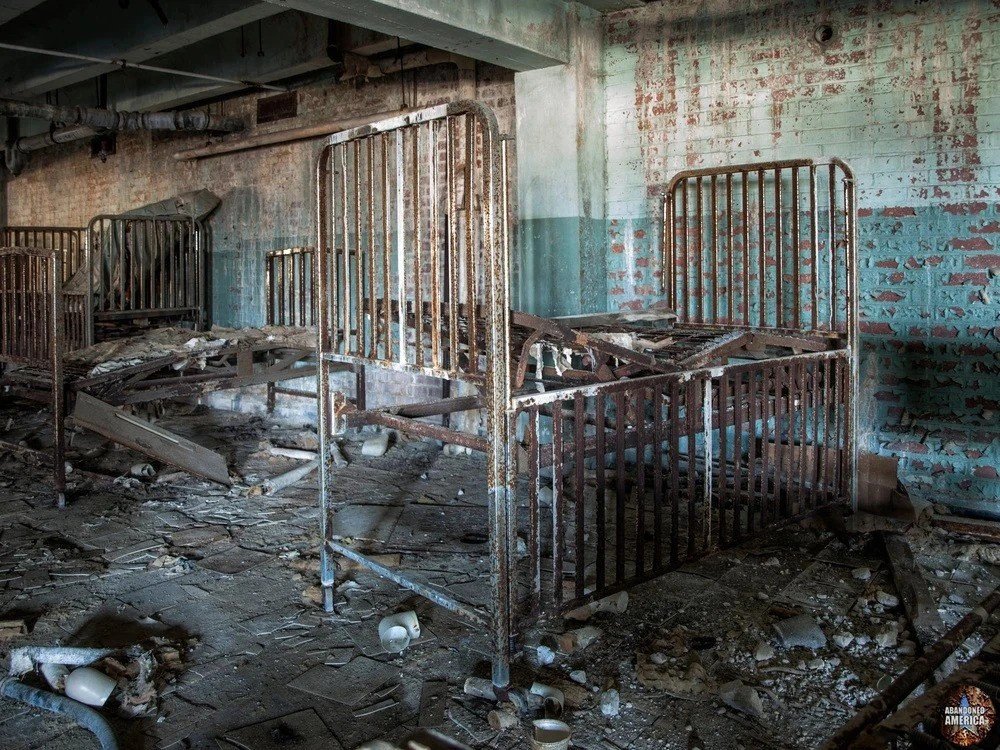
Adult cribs left in the basement of one of Forest Haven’s abandoned buildings
When the Justice Department joined the lawsuit and the case was resolved in 1978, it must have seemed like a major win. Forest Haven was to be shuttered, and the occupants would be relocated to group homes and fed appropriately. Despite the local government’s pledge, Forest Haven remained open until October 14, 1991, killing individuals with poor care and nourishment throughout. The Justice Department’s attempts to expedite the closure due to the deaths were met with hardened indifference by federal district Judge John Pratt, who reasoned that “these people… are not in the best of health, probably, any of them.” A proposal to spend $24,698 on training workers in proper feeding technique was shot down due to a lack of funds.
Finding attorneys to represent the inhabitants was challenging since, in wrongful death cases, damages are determined by the amount of money the deceased individual may have reasonably earned over the course of their life, and those living in Forest Haven are supposed to make little to no money. The conclusion drawn by Betty Evans and Murray Waas in their articles was that the callousness shown to the people of Forest Haven was the fault of the local administration and the community as a whole. This seems like a fair assumption.
This was a facility where people lost teeth due to poor dental care and vomiting from incorrect nutrition; individuals also died from bedsores as a result of being placed in adult cribs for an extended period of time. A staff member embezzled $40,000 from the inmates. After several warnings of lethal negligence, little more than the indifferent disposal of the victims’ bodies—marked only by a metal disc with a number—in mass graves by a maintenance truck occurred. How could it appear to be anything other than a malicious disregard for the adults and kids among us who are least able to speak up against abuse and protect themselves?
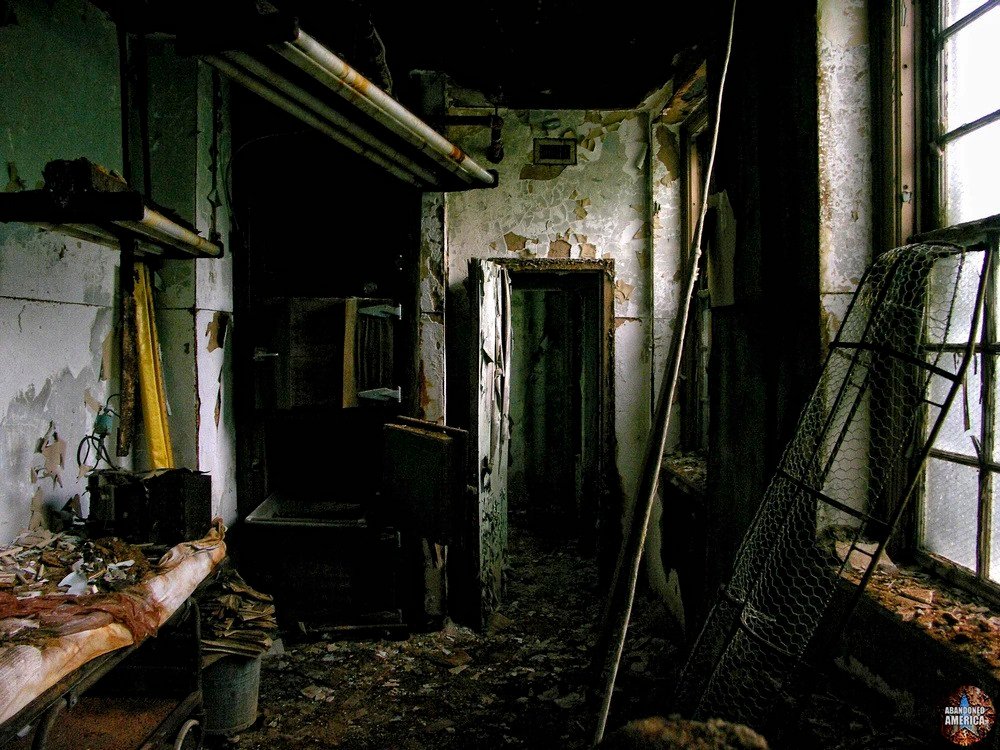
The rotting mortuary at Forest Haven. A Stokes basket is visible leaning against the window.
One of the first abandoned locations I went to was Forest Haven. Even though I was unaware of how horrifying its past was, the site soon made an amazing impression on me. Tucked somewhere in the forest between the Woodland Job Corps Centre, the juvenile incarceration centre known as the Oak Hill Youth Centre, and the National Security Agency headquarters, strange voices and jumbled pronouncements periodically broke the stillness. I was unaware of Forest Haven’s closing due to a terrible separation from residents’ well-being and the graves on campus that had been exposed by erosion.
The Curley Building, a nearly 70,000 square foot building constructed in 1971 to house 200 of the most disabled residents, greeted me as soon as I emerged from the trees. It was filled with worn-out textbooks, gruesomely decaying paintings of Peanuts characters, and the ubiquitous adult cribs that I would later find scattered throughout the campus.
A single wheelchair stood in front of me, almost completely engulfed by the untidy grass, as I crossed the street to approach the children’s hospital. The institution itself was in terrible disrepair. Anaesthetic vials rested next to bent examination seats in the abandoned dentist clinics, while rusty light fittings hung at strange angles and abandoned toys covered the rooms. The drop tiles in the ceiling had fallen out and merged into a filthy mud on the floor, and the basement was enveloped in darkness. That’s where I discovered the mortuary, mostly undamaged. Leaning against the wall was a Stokes basket, the kind of basket used by search and rescue teams and firemen.
It appeared unlikely that it was put to any use for anything but body transportation. I realised that the several tiny pairs of spectacles I saw about my feet in the muck while taking pictures of the mortuary had probably all belonged to deceased kids.
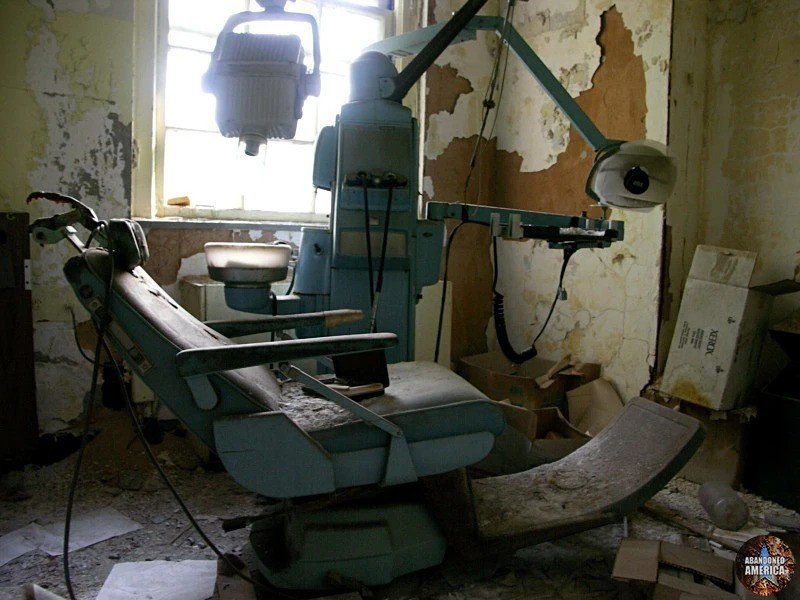
Over the years, every time I went back to Forest Haven, I discovered more disturbing information. The empty shoes that were scattered around, the spring-mounted horse that got lost in the weeds outside the playground, and the bags piled in a storage room that had contained the occupants’ possessions upon moving in were all there. There were the children’s small braces and crutches and the big cribs that were always in the halls and basements. The offices’ carpet of paperwork revealed peeks into things that were unthinkable. A doctor expressed his fury over the unfeasible working circumstances and the terrible impact on the inhabitants in one document, saying, “Her main dental issue is severe periodontal disease brought on by poor oral hygiene. She has gingivitis, which is rather bad. The last prophylactic she had was on June 1, 1989.
Currently, there is a heavy layer of food detritus, plaque, and [illegible] covering the teeth. Not only does she have periodontal disease, but her breath also smells horrible. These clients are not being cared for by a hygienist. This work cannot be completed without a hygienist. Some of them we can do, but not all of them. The worst instances need to be chosen and handled first. It was time to employ a hygienist four years ago. A girl with hydrocephalus and osteogenesis imperfecta (brittle bone syndrome) was reported in another study. She was confined to the cot even though she longed to go outside and play with the other kids. There was a good chance her bones might break if she was allowed to leave confinement.
There was Spruce Cottage, once used by the Oak Hill Youth Centre to house aggressive girls and encircled by ringlets of razor wire. Shortly after it closed, I took pictures of it while it was still completely empty of pills on the medical carts and the faceless CPR dummies peering down the dimly lit corridor. There were horrors on Oak Hill, too. Apart from the overall destitution, an inquiry conducted in 1989 found that employees had inflicted harm on young people by beating them with bricks, knives, chairs, milk cartons, and fists. This resulted in broken noses and teeth, dislocated shoulders, kidney damage, and swollen eyes. New Beginnings, a juvenile correctional facility, was established on the site after Oak Hill closed in 2009.
I’d like to think that Forest Haven residents’ unfortunate 1976 trip to Wildwood, New Jersey, is a thing of the past. Because they “didn’t want any coloured or retarded” to stay there, locals encircled their hotel and threatened to set it on fire, but the local police did little to keep them safe. As they drove away, pebbles were thrown at their bus. Even so, the facility’s 1991 shutdown was not that long ago, and much more recently, careless campus visitors painted the words “RETARDS” on some of the structures. The inmates of Forest Haven were transferred to underfunded, unmonitored group houses that were characterised as “roach dappled” and had shattered doors and furnishings when it closed.
One former patient, who was put in the room adjacent to a sexual predator, was repeatedly raped, according to a 1999 Washington Post article by Katherine Boo. Eventually, the sufferer tried to run into traffic in an attempt to end his life.
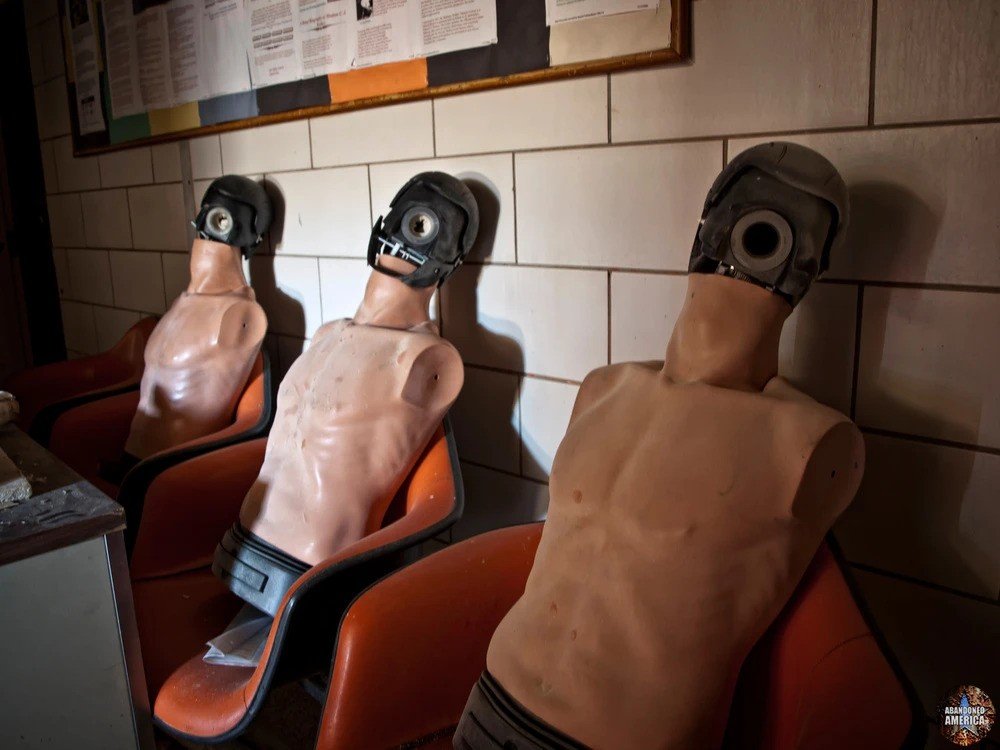
As group homes are run by for-profit entrepreneurs who live in multimillion-dollar villas yet claim not to be able to purchase toilet paper for the inhabitants, the same disregard, supervision, uncontrolled abuse, and public apathy persist. When Forest Haven was operational, people died as a result of the severely subpar treatment given by a doctor whose licence was suspended. His continuing practice was previously deemed to be a “grave risk and imminent danger to the health, safety, and welfare of the citizens of Maryland,” by the licencing board.Boo claims that following Forest Haven’s closure, the District paid psychologists who had been convicted of embezzlement, billed the government for treating the dead, and hired go-go dancers as “group home consultants,” among other people, to oversee group homes and rehabilitative programmes. Group home inmates were invoiced to the city for “therapy programmes” that included shovelling dung at the owner’s estate.
It is extremely difficult to provide care for people with severe physical and developmental problems; it calls for a degree of compassion and alertness that is nearly superhuman. In cases such as the girl with osteogenesis imperfecta, our own powerlessness to treat the underlying ailments forces us to face difficult questions, and empathy necessitates thinking through often excruciating details. The simplest people for predators of any type to take advantage of are those who are marginalised and might not be able to voice their concerns to others.
When the state schools were established, the idea was that they would offer opportunities for supervision and care that families could not always provide. Trained personnel would be able to assist residents in learning new skills and receiving higher-quality care than what could be found in their homes and communities. I think Betty Evans was correct when she said that this dream became a nightmare that took many lives due to a general lack of concern for the welfare of those who are less fortunate than ourselves.
Once upon a time, the District of Columbia Children’s Centre had a bronze plaque that said, “Yet while I live, let me not live in vain.” It’s an intriguing remark that assumes several interpretations depending on how it’s applied to the lives of Forest Haven’s occupants, employees, lifetime, and the broken remnants of the actual Forest Haven. All of the suffering was in vain if, in the wake of what transpired at Forest Haven and elsewhere, the public is not willing to keep an eye on residential treatment facilities of all kinds and to insist that they be hygienic, compassionate, and well-managed.